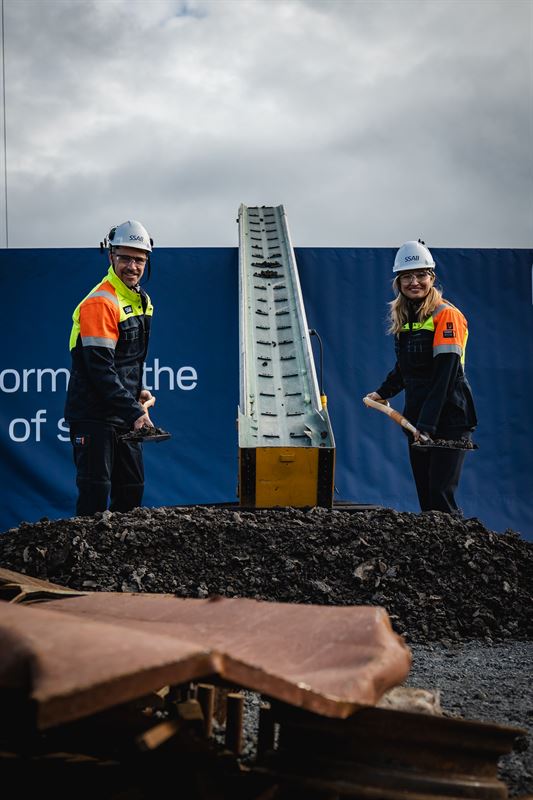🇸🇪 Sweden’s Deputy Prime Minister and SSAB’s CEO broke ground on a new steel mill in Luleå

SSAB’s CEO Johnny Sjöström and The Minister for Energy, Business and Industry and Deputy Prime Minister Ebba Busch.
The start of construction is a historic milestone in the transition to fossil-free steel production. The start of operations is planned for the end of 2029.
“Today we are writing history for Swedish industry. This investment consolidates Sweden’s position as a leading industrial nation and shows that we are meeting climate challenges with ground-breaking innovation and strong industrial leadership,” says Minister for Energy and Enterprise Ebba Busch.
SSAB’s new steel mill will replace today’s blast furnace-based production and will have a capacity of 2.5 million tons per year. The steel mill will be equipped with two electric arc furnaces, advanced secondary metallurgy, an integrated hot rolling mill and a cold rolling complex.
“We are building the world’s most electrified steel mill that combines cutting-edge technology in a unique way. It is an investment in both competitiveness and the climate. With the new technology, we get lower costs, shorter lead times and a better ability to handle variations in demand. When we close the current production, we will largely eliminate our carbon dioxide emissions in Luleå,” says SSAB’s CEO JohnnySjöström.
In total, SSAB’s investment in Luleå amounts to EUR 4.5 billion and also includes a cold rolling mill, advanced galvanization and continuous annealing.
Facts about the new steel mill in Luleå
Production is based on modern technology with two electric arc furnaces, advanced secondary metallurgy, energy efficient direct rolling mill and cold mill complex. The electric arc furnaces are equipped with technology that recovers excess heat from production, enabling its use for district heating. In addition, a method is used where scrap is fed continuously into the furnaces, which keeps the temperature more even and results in lower energy consumption. It reduces the formation of nitrogen oxides – substances that otherwise occur at high temperatures and can have a negative impact on both the environment and health. The technology contributes to both energy efficiency and cleaner air. Integrated electric steel mills (“mini-mills”) are a well-proven concept and are used for 75 percent of steel production in the United States. SSAB uses electric arc furnaces in its steel mills in Montpelier, Iowa and Mobile, Alabama.
The finished steel format consists of hot-rolled strip plate with a thickness from 1.3 to 25.4 millimeters, a width of up to 2100 millimeters and a coil weight that can reach up to 40 tons. Fossil-free sponge iron and recycled scrap can be used as raw materials, which contribute to a significant climate benefit. The estimated emission reduction amounts to about 3 million tonnes of carbon dioxide per year – equivalent to about seven percent of Sweden’s total emissions. Production start-up is scheduled for the end of 2029.
For further information, please contact:
Charlotte Lindevall, Head of External Communications, charlotte.lindevall @ ssab.com,
phone: +46 703 44 59 73
Originally published on 17 September by SSAB.
Announcements are published as a service to readers. The sender is responsible for all content.
Announcements for publication can be submitted to [email protected].